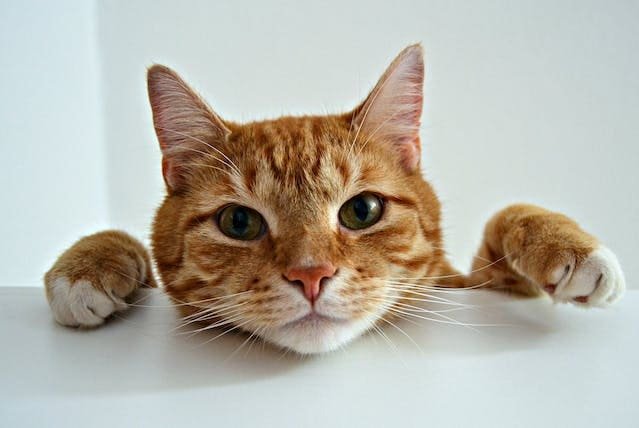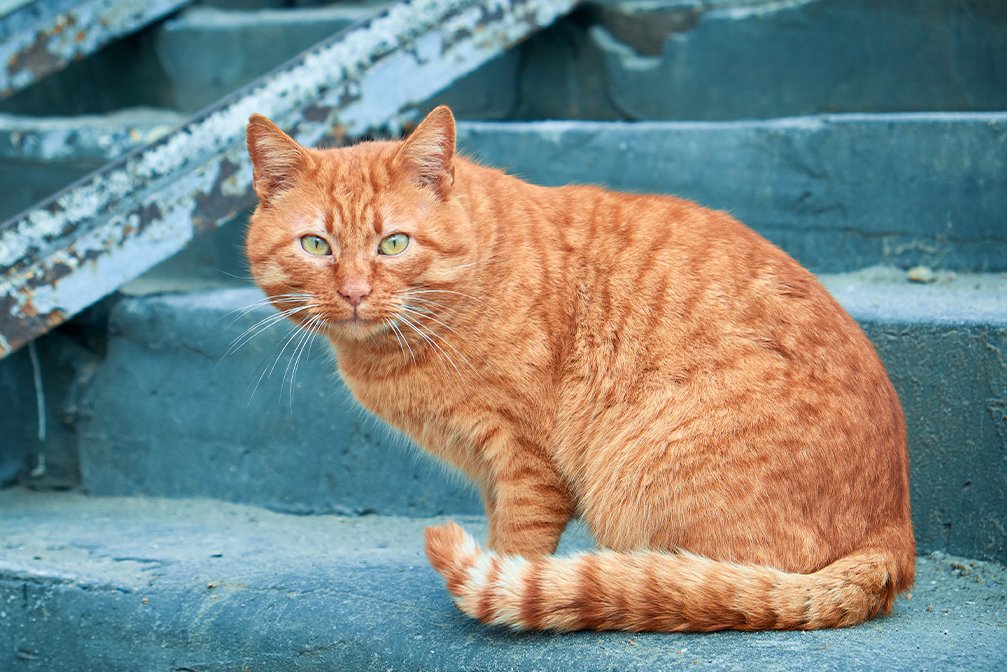Table of Contents
Have you ever wondered why the world of our furry friends is so colorful and diverse, especially when it comes to orange cats? Imagine walking through a neighborhood full of cats, and you’ll notice something quite curious – many orange cats seem to be male! Isn’t that fascinating?
Are most orange cats male? In this journey through the vibrant world of orange cats, we will uncover some amazing secrets in their genes and surroundings that make them special.
We’ll dive deep into the science of cat colors, exploring how their genetic makeup decides whether they’ll be orange, black, or any other color. It’s like a magical puzzle where each piece fits perfectly to create these beautiful creatures. And guess what? There’s a surprising reason why most orange cats are male, and it’s all down to their chromosomes – those tiny things inside their cells that make them who they are.
But that’s not all! We’ll also explore how the places they live might affect their color. Do you think an orange cat prefers sunbathing in a warm, cozy spot more than others? We’ll find out! Plus, we’ll look at some interesting numbers that show how many orange cats are male compared to female.
So, get ready to embark on this exciting adventure to understand the delightful mystery of why most orange cats are male. It’s a story full of science, surprises, and cat love!
The Colorful Genetics of Orange Cats
The Role of X and Y Chromosomes in Determining Cat Colors
Did you know that the reason why cats have different colors is a bit like a secret code hidden inside their bodies? This code is made up of something called chromosomes. Cats, like us, have chromosomes that decide many things about them, including the color of their fur.
Imagine chromosomes as tiny instruction books inside every cat. Male cats have an X and a Y chromosome, while female cats have two X’s. Here’s where it gets super interesting: the instruction for being an orange cat is mostly found on the X chromosome. It’s like having a special page in the instruction book that says, “This cat will be orange!”
So, if his single X chromosome has the orange instructions for a male cat, he will be orange. But a girl cat needs to have the orange instructions on both of her X chromosomes to be fully orange. It’s a bit like winning a small lottery!
Why Orange Cats Are Often Males?
This is because of a special kind of change in their genes, known as a mutation. This mutation is a tiny twist in their genetic code that makes the orange color more likely to appear in males.
Think of it like a game where males have a higher chance of picking the ‘orange’ card. This mutation doesn’t happen as often in female cats, so orange female cats are rarer.
It’s like a magic trick that nature plays, making most orange cats turn out to be male. This doesn’t mean orange female cats are impossible, but they are like precious gems, rare and special!
The Influence of Climate on the Color of Cats
Why Warm Climates Love Orange Cats
Did you ever notice that some colors look brighter and happier in the sunshine? It’s the same with orange cats! Orange cats seem to be more common in warm climates, where the sun plays hide and seek with the clouds. This interesting fact might have something to do with their genes liking the sunshine as much as we do.
In sunny places, the genes that decide a cat’s color work even better. Imagine genes are tiny artists inside a cat, and they paint the cat orange in warm weather more often! This doesn’t mean cold places don’t have orange cats, but just like ice cream tastes better on a hot day, orange seems to pop out more in the sun.
Does Gender Play a Role in Environmental Adaptation?
Now, let’s consider male and female cats in different climates. Some scientists think that boy cats, especially the orange ones, might handle the heat better than girls. It’s a bit like how some kids prefer playing in the sun, while others like shady spots.
Imagine a group of cats on a sunny day. The males might be lounging in the sunlight, feeling cozy and happy, while the females might seek a cool place under a tree. It’s not a rule but more of a fun observation. Like us, every cat, whether a boy or a girl, has its likes and dislikes. So, while some male cats might love the sun, don’t be surprised to find a female cat enjoying it too!
The Ratio of Male to Female Orange Cats
The numbers tell a really interesting story when we look at orange cats. Research shows there are way more male orange cats than female orange cats. In fact, for every 19 female orange cats, there are about 81 male orange cats!
This is because of their chromosomes, those tiny instruction books we discussed earlier. Remember, it’s like winning a mini lottery inside their genes for a cat to be orange. And males have a better chance of winning this lottery because of how their chromosomes work.
It’s a bit like flipping a coin. Male cats only need to flip it once to become orange. But female cats must flip it twice and get the same result. That’s why seeing an orange girl cat is like finding a rare treasure!
Addressing the Myths vs. Reality
Sometimes, people believe things that aren’t true, especially regarding something as cute as orange cats. You might hear someone say, “All orange cats are boys,” but now you know that’s false. Girl orange cats exist, but they’re just rarer.
Another myth is that orange cats are always wild or naughty. But just like people, every cat is unique. Their color doesn’t decide their personality. So, whether an orange cat is playful, cuddly, or a bit of a trickster, it’s all about their special character, not their color.

FAQs
Why Orange Cats Are So Special?
Some people believe these fiery-colored felines bring good luck. Others think they have a unique sparkle in their personalities. The truth is, each orange cat is special, just like a fingerprint.
Their vibrant fur is like a splash of sunshine, brightening our days. And while their color is indeed eye-catching, their charm and loveable nature steal our hearts. Whether they’re cuddly, playful, or a bit naughty, each orange cat adds a bit of magic to our lives.
Do Orange Cats Have Different Personalities Than Other Cats?
Science hasn’t found proof that fur color changes a cat’s personality. But many orange cat owners will tell you their pets are full of life and love.
Just like us, cats are individuals. Some may love playing and exploring, while others prefer a quiet nap in the sun. What shapes a cat’s personality is how they’re treated and their experiences, not the color of their fur.
Are Orange Cats More Likely to Be Indoor or Outdoor Cats?
When it comes to being indoor or outdoor cats, orange cats are like any other cats. It depends on their personality and how they were raised. Some may love adventuring outside, chasing butterflies, and climbing trees. Others might prefer the safety and comfort of the indoors, watching the world from a cozy window sill.
It’s important to remember that while outdoor life can be exciting for cats, it also has risks like traffic and predators. So, if you have an orange furry friend, think about what’s best for their safety and happiness.
Do Orange Cats Require Special Care?
When caring for orange cats, they don’t need anything different than other cats. Regular vet check-ups, a healthy diet, and lots of love are what every cat needs, no matter their color.
Final Thoughts
In our journey through the world of orange cats, we’ve discovered the fascinating role of genetics and environment in shaping their unique colors and personalities. Remember, these vibrant felines are more than just their striking appearance; they bring joy, love, and companionship. If you’re considering adding a pet to your life, consider adopting an orange cat. By welcoming one of these charming creatures into your home, you’re not just getting a pet; you’re gaining a lifelong friend. Let’s spread the love and make a difference in the life of an orange cat today!

